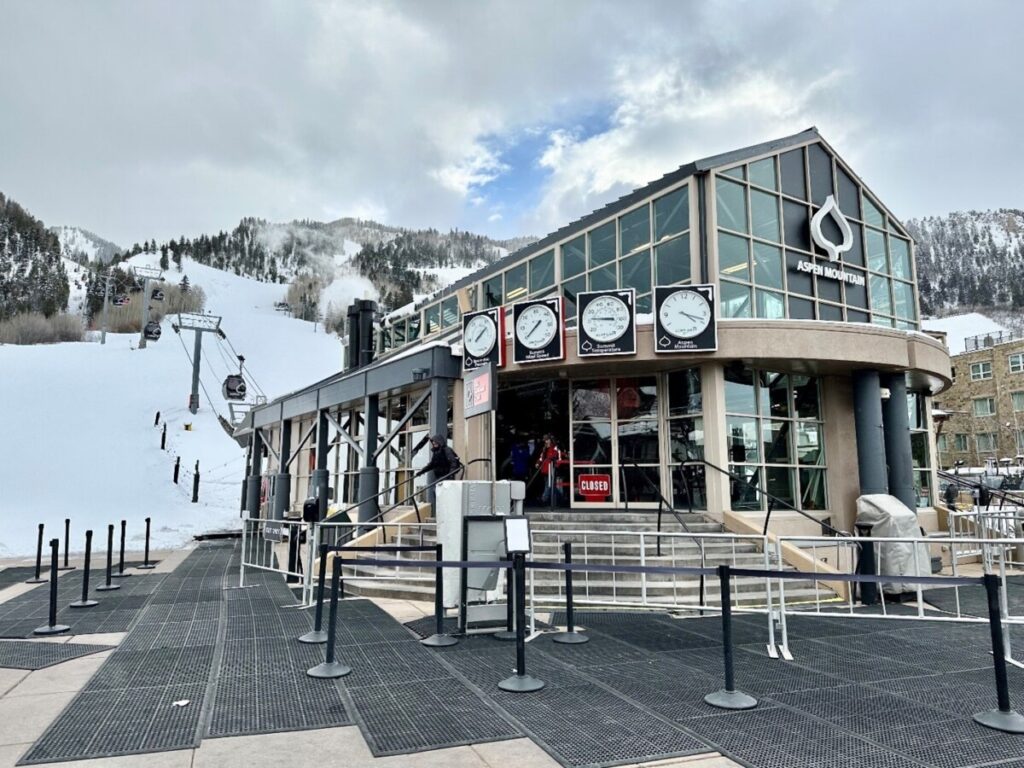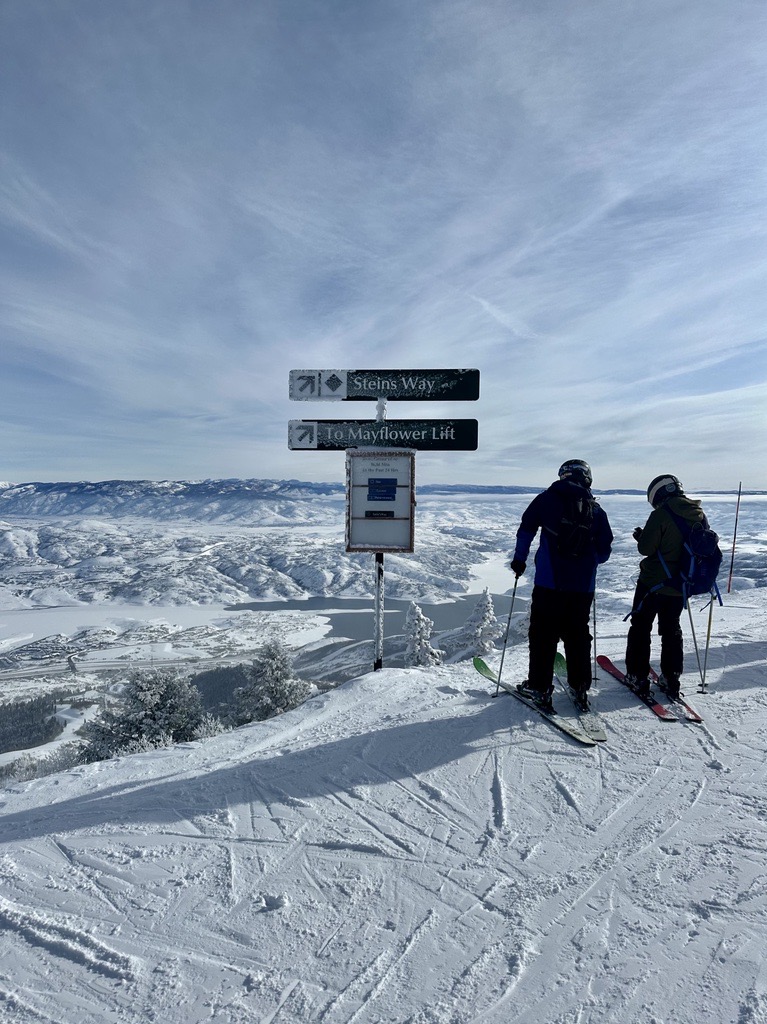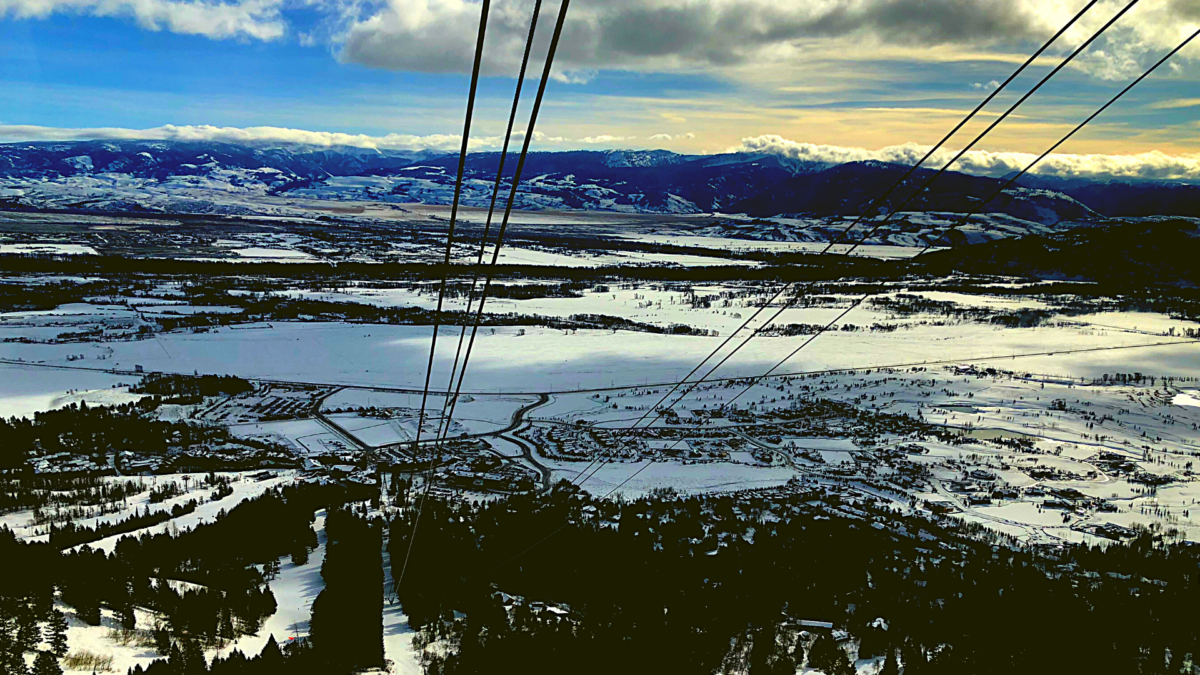The ski industry has undergone significant evolution over the last 20 years as resorts have come and gone, innovative technology has transformed the mountain experience, and demographic shifts have introduced new people to the sport. This has piqued the interest of financial firms in both the private and public markets to create a more profitable and efficient industry for customers, employees, and investors alike. The primary question for avid skiers and community residents is whether these financial investors have good intentions. But, to date, the effect of private equity has already been considerable with the introduction of new season passes for customers, substantial reinvestments in surrounding communities, and prioritization of environmental progress through snow-making and grooming technology. This positive influence will continue as private equity’s role in the industry grows.

Founded on November 23, 1979 by Joe Houssian, Intrawest began as a Canadian real estate development company constructing single-family homes and apartments across British Columbia. It was not for another decade that the firm became interested in the ski industry. In 1986, U.S. billionaire Marvin Davis wanted to sell off 20th Century Fox’s skiing assets, specifically Blackcomb Skiing Enterprises, the owner and operator of Blackcomb Mountain in Whistler. As a leading Canadian real estate developer, Joe Houssian was introduced to Davis despite his complete unfamiliarity with the ski industry. Houssian negotiated a $3.7 million deal for 50 percent of Blackcomb Skiing Enterprises with an option to purchase the remaining 50 percent in five years for $5.8 million. Blackcomb became a highly profitable asset for Intrawest and announced $112 million in renovations and upgrades the following year. This investment fundamentally shifted the strategic focus of Intrawest and the development of the ski industry at large.
What is the Next Chapter for Intrawest?

On March 21, 1990, Intrawest filed with the Toronto Stock Exchange to trade under the ticker ITW. The firm raised CAD$26 million through the initial public offering (IPO) to use in acquiring more ski assets, such as purchasing Mont Tremblant for $22 million in 1991. Intrawest found a niche in the Canadian ski market as it was less developed than the U.S. in the 1980s and 90s. Canada went through a recession in the early-1980s from rising inflation, thus creating a bad economy for foreign investors to enter and compete against Intrawest. Eventually, Intrawest expanded into the U.S. in 1994 by acquiring Stratton Mountain in Vermont. Stratton was a four-season resort, making it a lucrative investment for Intrawest beyond the ski season. Intrawest garnered respect in the industry for its large reinvestments into its resorts. The Roanoke Times commented in 1995 that “Intrawest has averaged 25 percent annual growth in skier visits. The North American average is 1 percent.” The company positioned itself as an operator, not just an owner or investor. For example, within the first season of owning Stratton, four high-speed chairlifts were installed, improving the skier experience. Management continued to expand rapidly by purchasing assets in West Virginia with Silver Creek and Snowshoe for $40 million in 1995. In 1996, they purchased 31% of Mammoth Mountain in California.
These investments reflected broader positive trends in the real estate market during the 1990s driven by the 5-percent decline in the Federal Funds Rate from 1990 to 1993. Real estate prices are closely tied to interest rates because investors require mortgages and loans. Intrawest and other investors found the ski industry especially attractive because of the underlying value and stability from real estate, while resorts also generated revenues from lift passes, dining, and on-mountain experiences.
To increase and diversify revenues, Intrawest looked to rebrand itself as a leisure company instead of a ski resort operator in the late-1990s and early-2000s. The company purchased Sandestin Resorts in Florida for $130 million in 1998. Later, in 2004, Intrawest reorganized its mountain and warm-weather resorts into a new corporate division called the Leisure and Travel Group. Daniel Jarvis, previously CFO of Intrawest, led this new group. Jarvis described the strategy in a 2004 corporate press release saying, “We had a vision of a ski resort being more than a place to ski, but rather an all-encompassing experience. Creating a business model around that vision broke the mold in the hotel/retail/festival industry.” This new strategy transformed how people viewed the ski industry. Despite these positive developments, Intrawest’s stock struggled to reflect the true value of the firm on the public market.
Intrawest’s Continued Struggles Attracted New Interest
Activist hedge funds patrol inefficient, undervalued, and mismanaged public companies. Whereas private equity firms are mandated to generate returns by buying private companies, hedge funds have a wider scope to trade any publicly listed or privately held security. An activist hedge fund looks to take an “active” position in their investment by working closely with management to extract value. They often pressure management teams into making quick and decisive business decisions, such as laying off employees or selling core business units. Martin Lipton, the founding partner of Wachtell, Lipton, Rosen, & Katz, a global law firm specializing in mergers and acquisitions and corporate governance, noted in a Harvard Law School publication that “no company should consider itself immune from activism. No company is too large, too new, or too successful.” For Intrawest, management was metaphorically infected by the 18% stake Thomas Hudson Jr. and his activist hedge fund Pirate Capital owned in 2006. Intrawest fit all the qualifications from the team at Harvard Law; they were “large” with over 24,000 employees and “successful” after booking $1.7 billion in revenue for 2005. Intrawest’s stock traded around $33 per share; however, Pirate Capital publicly stated that they valued the stock at $45 per share and pressured management to undergo a strategic review. Pirate Capital felt that the underlying real estate assets owned by Intrawest were discounted by two to three times the value they would receive if broken up and sold separately.
Ultimately, on August 11, 2006, Intrawest accepted an offer from Fortress Investment Group for $2.8 billion at $35 per share to become an independent, privately held company. Fortress is a private equity firm that invests in businesses with strong asset bases and cash flows, such as real estate. At the time, it managed over $30 billion. Wesley Edens, Chairman of Fortress, commented on the “great opportunity to continue Intrawest’s evolution into a leading global leisure player.” Intrawest’s challenges on the public market highlight the business risks of ski industry companies, including exposure to unpredictable weather conditions, capital intensive equipment requirements, and consumer spending. Because of this, private equity plays an immensely important role in ensuring that ski companies have consistent and healthy access to the capital markets, preventing any disruptions to the ski season.
The 2007-2008 Financial Crisis: An Avalanche Smashes the Ski Industry

Some scholars suggest that the ski industry is recession-proof due to its affluent customer base. However, in a 2016 study, Professors Marijke Taks and Jona Ragoen found that ski participation in recessions broadly declines. Because of the turbulent global economy, Intrawest faced significant financial distress. The company was now led by CEO Bill Jensen, who succeeded Joe Houssian, Intrawest’s founder, in 2008. Jensen previously served as president of Vail Resorts’ Mountain Division. Reporters for Travel Weekly noted that this hire demonstrated a pivot for Intrawest from a real estate development company to a ski resort operator. After announcing large scale layoffs, Jensen told the Aspen Times, “we had to be responsive to the economy,” while stressing that the guest experience would be unaffected. Bankruptcy and widespread foreclosures were a real risk for Intrawest. Fortress missed a $524 million interest payment on the company’s debt in early 2010. Sources told the New York Post that creditors holding $1.4 billion of debt on Whistler Blackcomb were “within 10 days” of entering foreclosure. Intrawest continued to face bleak prospects as it missed further interest payment in December 2009. Creditors threatened to auction off the company’s assets to pay the outstanding debt. With the looming collapse, Intrawest entered into a restructuring plan on April 28, 2010 to refinance $1.2 billion of loans. While the Global Financial Crisis exposed some risks in working with private equity firms, without the financial support and knowledge of Fortress investors, Intrawest’s story could have taken a turn for the worse, adding its name to a long list of failed companies in 2008-09.
As the global economy rebounded in the early-2010s, the ski industry saw tourists return to the slopes and lodges, providing a much-needed lift on revenues. Through 2011 and 2012, Intrawest and Fortress navigated its way out of the difficult economic period with less debt to position the business for long-term, sustained success. The company grew to $524 million in revenue with over six million visitors across its resorts in 2013. At this time, Fortress had owned Intrawest for seven long years. Commonly, private equity funds have a 10-year life where an investor will hold onto a company for 5-8 years based on strategy for optimizing returns. Thus, Fortress likely needed to sell some, or all, of its stake in Intrawest. In 2013, Intrawest filed with the SEC on November 12 to become a publicly-traded company under the ticker SNOW. The company raised $188 million through the IPO at a valuation of $540 million, down sharply from the $1.8 billion in Fortress’ 2007 purchase. By 2013, the economy was rebounding from the Great Financial Crisis suggesting that the valuation drop was specific to Intrawest. In a Reuters article, Josef Schuster, a financier focused on IPO’s, suggested that “the market is getting more sensitive to where IPO proceeds go to, and favors firms where proceeds are earmarked for growth versus reducing leverage or going to selling shareholders.” For Intrawest, the IPO proceeds were raised to “reduce leverage” and provide liquidity to “selling shareholders” instead of investing in new growth initiatives. Bill Jensen stepped away from the CEO role in 2014 for personal reasons. Thomas Marano, a real estate investor, succeeded Jensen. And, over the next three years, Intrawest grew revenue to $570 million before ultimately garnering new interest from private equity investors.
The Song Was “Stuck on Repeat” for Intrawest

On May 22, 2017, KSL Capital Partners (“KSL”) and Aspen Skiing Company announced a $1.5 billion buyout of Intrawest for a large 40% premium, once again removing the company from the public stock exchange. KSL is a global private equity firm specializing in travel and leisure businesses, such as Village Urban Resorts and the Outrigger Hotels, with $8.5 billion in assets under management. Following the transaction announcement, Intrawest’s CEO Thomas Marano commented, “Our new partners bring additional financial resources and a shared passion for the mountains and our communities.” KSL’s CEO Eric Resnick added: “Each resort has its own unique story and its own unique sense of place. We are committed to honoring the deep traditions of each resort.” Unlike Fortress in 2007, KSL and Aspen Skiing Company both have expertise in growing and sustaining the “unique story” of ski resorts. Whereas financial executives ran Intrawest under Fortress’ ownership, KSL and Aspen Skiing Company instead appointed experienced operators, such as the former CEO of Mammoth Mountain Rusty Gregory. From the onset, the new investors prioritized the customers, employees, and surrounding communities of Intrawest’s portfolio.
Through the purchase of Intrawest, KSL and Aspen Skiing Company now owned 12 mountains across the U.S. and Canada, including Palisades Tahoe, Deer Valley, and Mammoth Mountain. In a landmark move for the ski industry, and to better protect, sustain, and organize these unique assets, KSL and Aspen Skiing Company rebranded Intrawest as the Alterra Mountain Company on January 11, 2018. Alterra, a combination of the words altitude and terrain, seeks to maintain the rich history, stories, and culture at each property while better sharing resources, such as Aspenware’s customer service software or the Ikon pass ticket platform. As a result of the combination, Alterra, with the support of investors, has launched significant capital investment programs. Alterra recently announced a $500 million program for 2023 specifically to enhance guest and employee experiences. Alterra’s value creation and capital reinvestment efforts surround three primary facets – the customers, employees, and environment – to create a better mountain experience.
The constant shifts, setbacks, and advancements over the last 40 years for Alterra demonstrate the greater resiliency of the ski industry. From activist investors and run-ins with aggressive creditors, Alterra, and formerly Intrawest, overcame significant corporate turmoil to reach its current steady and sustainable state. Above all else, the emphasis on the skier, employee, and community experiences continues to shape the brand. As the analysis proves, private equity played a catalytic role in the development of Alterra – and while there were serious setbacks and periods of distress, the overall impact was positive on both the company and industry as a whole.
Bibliography
Akesson, Alex. “Pirate Capital Hedge Fund Boosts Stake in Intrawest.” HedgeCo.Net. Last modified May 4, 2006. Accessed April 17, 2023. https://www.hedgeco.net/news/05/2006/pirate-capital-hedge-fund-boosts-stake-in-intrawest.html.
Alterra Mountain Company. “Announcing Alterra Mountain Company: A Family of 12 Iconic Mountain Destinations in North America.” Alterra Mountain Company. Last modified January 11, 2018. Accessed April 18, 2023. https://www.alterramtnco.com/news/announcing-alterra-mountain-company.
Alterra Mountain Company. “Alterra Mountain Company Plans to Invest Nearly Half a Billion Dollars in Transformational Changes in the Year Ahead.” Alterra Mountain Company. Last modified March 21, 2023. Accessed April 18, 2023. https://www.alterramtnco.com/news/alterra-mountain-company-plans-to-invest-nearly-half-a-billion-dollars-in-transformational-changes-in-the-year-ahead.
Bloomberg News. “Company News; Intrawest Acquires Sandestin Resorts For $130 Million.” The New York Times, July 15, 1998. Accessed April 17, 2023. https://www.nytimes.com/1998/07/15/business/company-news-intrawest-acquires-sandestin-resorts-for-130-million.html.
Clausing, Jeri. “Jensen Hire Means a Sharper Focus on Hotel Ski Business for Intrawest.” Travel Weekly. Travel Weekly, January 21, 2008. Last modified January 21, 2008. Accessed April 26, 2023. https://www.travelweekly.com/Travel-News/Hotel-News/Jensen-hire-means-a-sharper-focus-on-hotel-ski-business-for-Intrawest.
Clydesdale, Greg. “Ski Development and Strategy.” Tourism and Hospitality Planning & Development 4, no. 1 (June 22, 2007): 1–23.
Cochran, Bill. “New Owner Will Change Snowshoe.” The Roanoke Times, October 2, 1995.
Dimri, Neha. “Shares of Debt-Heavy Intrawest Resorts Fall in Debut.” Reuters. January 31, 2014. Last modified January 31, 2014. Accessed April 26, 2023. https://www.reuters.com/article/us-intrawestresorts-ipo-idUSBREA0U1EM20140131.
Falk, Martin, and Sigbjorn Landazuri Tveteraas. “Modelling the Wider Effects of Ski Lift Investments.” Empirical Economics (February 27, 2019): 259–274.
Falk, Martin, and Laurent Vanat. “Gains from Investments in Snowmaking Facilities.” Ecological Economics 130 (October 2016): 339–349.
Granito, Alison. “Fortress Buys Intrawest for $2.8bn.” PERE. Last modified August 11, 2006. Accessed April 17, 2023. https://www.perenews.com/fortress-buys-intrawest-for-2-8bn/.
Intrawest Resort Holdings, Inc. “Intrawest Sets Its Sites on Global Leisure and Travel Market; Crosses $1.5 Billion Revenue Milestone.” Hotel Online, October 20, 2004. April 29, 2023. https://www.hotel-online.com/News/PR2004_4th/Oct04_IntrawestMarket.html.
Intrawest Resort Holdings, Inc. “Form S-1 2016”. SEC EDGAR website. November 12, 2013. Accessed April 17, 2023. https://www.sec.gov/Archives/edgar/data/1587755/000156761913000131/s000092x2_s1.htm
Intrawest Resort Holdings, Inc. “Form 10-K/A 2016”. BamSEC website. September 8, 2016. Accessed April 17, 2023. https://www.bamsec.com/filing/114036116084750?cik=1587755
Intrawest Resorts Holdings, Inc. Investor Relations. “Intrawest Resorts Holdings, Inc. to Be Acquired by Affiliates of Aspen Skiing Company and KSL Capital Partners.” Business Wire. Last modified April 10, 2017. Accessed April 18, 2023. https://www.sec.gov/Archives/edgar/data/1587755/000156761913000131/s000092x2_s1.htm.
Kosman, Josh. “Intrawest Foreclosure a Threat to Olympics.” New York Post. January 20, 2010. Last modified January 20, 2010. Accessed April 18, 2023. https://nypost.com/2010/01/20/intrawest-foreclosure-a-threat-to-olympics/.
Lipton, Martin, Wachtell, Lipton, and Rosen & Katz. “Dealing with Activist Hedge Funds and Other Activist Investors.” Web log. Harvard Law School Forum on Corporate Governance, September 2, 2022. Accessed April 17, 2023. https://corpgov.law.harvard.edu/2022/09/02/dealing-with-activist-hedge-funds-and-other-activist-investors-5/.
Miller, Scott N. “Layoffs, Cutbacks Hit Vail Resorts.” The Aspen Times. Last modified December 5, 2008. Accessed April 18, 2023. https://www.aspentimes.com/news/layoffs-cutbacks-hit-vail-resorts/.
Pitchbook. “Intrawest Company Profile,” 2023. Accessed April 17, 2023. www.pitchbook.com.
Roy, Priya A. “Maximizing Value in the Real Estate Private Equity Space: Expansion, Competition, and Alliance.” The Journal of Private Equity, vol. 18, no. 2, (Spring 2015): 59–70.
Taks, Marijke and Ragoen, Jona. “Coping with Recession in the Ski-Industry: A Suppliers’ and Consumers’ Perspective.” Journal of Sports Management and Commercialization, January 5, 2016. Accessed April 16, 2023. https://scholar.uwindsor.ca/humankineticspub/40
The Denver Post. “Intrawest Announces Restructuring of Debt.” Summit Daily. Last modified April 28, 2010. Accessed April 18, 2023. https://www.summitdaily.com/news/business/intrawest-announces-restructuring-of-debt/.

Dear Mr. Trimble,
I am on the board of directors of Sierra Watch, long an opponent of Alterra’s development aspirations in California’s Olympic Valley (Truckee, Tahoe). I am trying to understand the “continuation vehicle” just announced by Alterra and in my research, I found your paper for Emory. Outside of the company, few people understand its financing as well as you and I would very much like to talk to you. If you are willing, please call me at (510) 847-3358.
Thank you, Maggie Hand